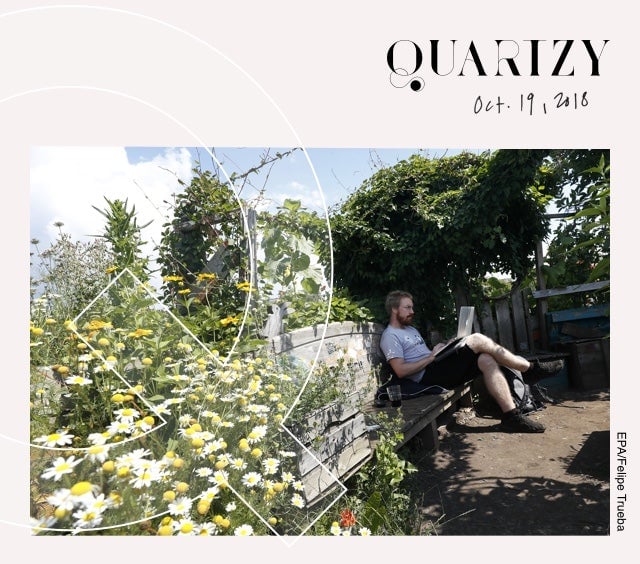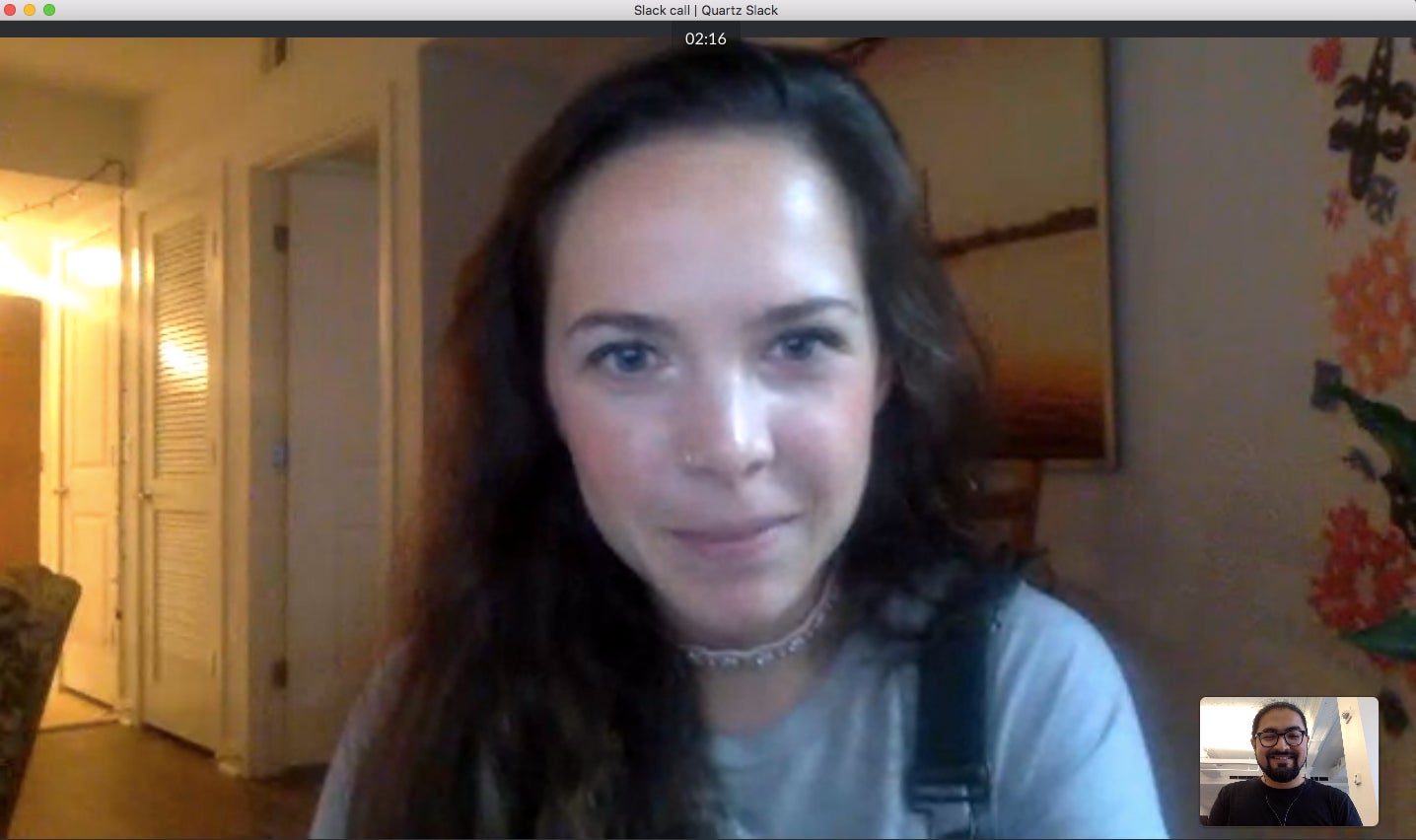Quartzy: the going remote edition
Happy Friday!

Happy Friday!
I’m Corinne Purtill and I’m a reporter for Quartz At Work, where I write about work, life, and all the varied reasons why we do the things we do. After 17 years reporting in Washington, DC, Phnom Penh, New York, and London, I now live with my family in a southern California beach town just 20 miles up the coast from the place I grew up, where my sprawling extended family still lives. It’s a wonderful place to live, work, and raise my kids (not to mention the sunshine and tacos). It also happens to be 2,800 miles from Quartz’s main office in New York, which brings us to a subject particularly close to my heart: going “remote.”
A growing minority in the US works from home full-time; more have the flexibility to log in occasionally from someplace other than the office. As I’ve learned over five years reporting in London and Los Angeles, and as a former expat far from that big loving family I mentioned above, the key to embracing the long-distance work life and conquering FOMO is mindset. You’re not just not there—you’re here. You are doing this job from this place, contributing perspective and insight that is different and valuable precisely because of your location. And whether you’re full-time, freelance, or managing other long-distance arrangements and relationships, a few tweaks can help you make it a pretty darn good life.

But what should we call it? Here’s a little secret: I’ve never liked the term “remote working.” Remote is the opposite of connected. Remote is anathema to close, productive relationships, which—as we’ll discuss—are the key to success and happiness in the home office (and beyond, really). So what should we say instead? “Working from home” isn’t always accurate, thanks to the allure of co-working spaces and coffee shop wifi. I like the phrase “distributed teams.” It frames an organization’s scattered contributors not as lonely satellites far from the main office, but as stars in a constellation, each contributing its own value from a specific place.
Claim your space. One of the best things about working (or living) independently is the freedom to control your own space. No more invasive open-plan offices, temperature-control battles, or tragedies of the common playing out in break rooms full of dirty mugs and coffee stains. While we all have our aspirational home studios (I think about Mark Twain’s writing hut and Danielle Steel’s custom desk a lot), those Pinterest- and Design Sponge-fueled fantasies are often clipped by the fact that home offices are located in, well, our homes. Partners, kids, and pets come with their own clutter; it’s a luxury in most cities to have any square footage that doesn’t have to serve multiple functions.
But defining your workspace is often less about décor and more about point of view. In June, the writer Nicole Cliffe asked on Twitter how people who work from home about the rituals that mark the start and end of work time. The replies were delightful: sensory changes like lighting a candle or spritzing perfume when it’s time to start, going for a regular walk or run at the end of a shift, and physically hiding the laptop during non-work hours. Cliffe’s own trick is to “immediately take down my ponytail and shake my hair out like a sexy librarian in an adult film.”

OPERATOR: I need you to tell me what you’re wearing, O.K.?
—from “I Work From Home,”The New Yorker
Put on some pants. We must dispel a myth here: working from home does not mean working in your pajamas. Actually, working from home should not mean working in your pajamas.
https://giphy.com/gifs/season-9-the-simpsons-9×12-l2Je0TQu53JfclNhC
“The single best advice I got when I went remote was from [a friend] who said, ‘Put on pants,’ by which I’m pretty sure he meant, ‘Act like you’re going to work,’” says Chris Groskopf, a data engineer who has worked remotely for both NPR and Quartz. “Get up, put on clothes you’d leave the house in, take a look in the mirror, and go to your work space,” he writes in his seminal guide Making Remote Work Work—even when that workspace is simply a desk in the same room where you just put on the clothes. Rituals make all the difference.
So do friends. Katherine Foley is a brilliant science writer—if you’ve never read her story on Liquid Ass, you’re in for a treat—and another of Quartz’s satellite stars. One of her closest colleagues is fellow science reporter Akshat Rathi, whose London office is some 3,600 miles away from Foley’s in Washington, DC. The two have a standing 30-minute weekly phone call to catch up on work and life.
“The trick to maintaining this feeling of proximity in the face of distance? Specific, intentional communication,” Foley says. “While snippets of small talk are not overtly part of your job description, working seamlessly together usually comes down to having strong bonds. And building those bonds is often a matter of small interactions.”
Her advice could apply just as easily to long distance friendships or romantic relationships. We can see people all the time but not feel close to them; what matters is how often you connect. Water-cooler chat or regular catch-ups over dinner aren’t the only way to keep consistent contact going. Being physically apart forces you to be proactive in keeping connections alive—and the effort is pretty much always worth it.

Have a great weekend!


Guayaba Tequila Sour. My friend Susan—a photographer, raconteur, mixologist, and mom nonpareil—recently discovered an unfamiliar fruit in her sister-in-law’s southern California garden. It was a guayaba, or Mexican guava, a treat not exactly abundant in her Maryland home. Admirably, her first thought upon spying this mystery fruit was: how can I make this a cocktail? She plucked a few, simmered them with rosemary and sugar, and stirred the syrup into a frothy beverage, as she shared on her blog, Tippled Pink. If you don’t happen to have a guayaba tree, Susan advises substituting peeled and pitted mango and a twist of lemon in the syrup recipe—or any sweet-tart fruit you have to hand. Shake 2 oz Hornitos Reposado Tequila, 3/4 oz rosemary guayaba simple syrup, and 1/2 oz lemon juice in an ice-filled shaker until the shaker gets frosty. Double-strain into a chilled coupe. Dump ice from the shaker and pour the strained ingredients back into it. Add one egg white and a stainless steel whisk ball if you’ve got one, and shake vigorously for 15 seconds. Strain the cocktail back into the chilled glass. Place three dashes of Peychaud’s Bitters in the center of the cocktail, then drag a toothpick through the bitters to form a sun design. Enjoy.